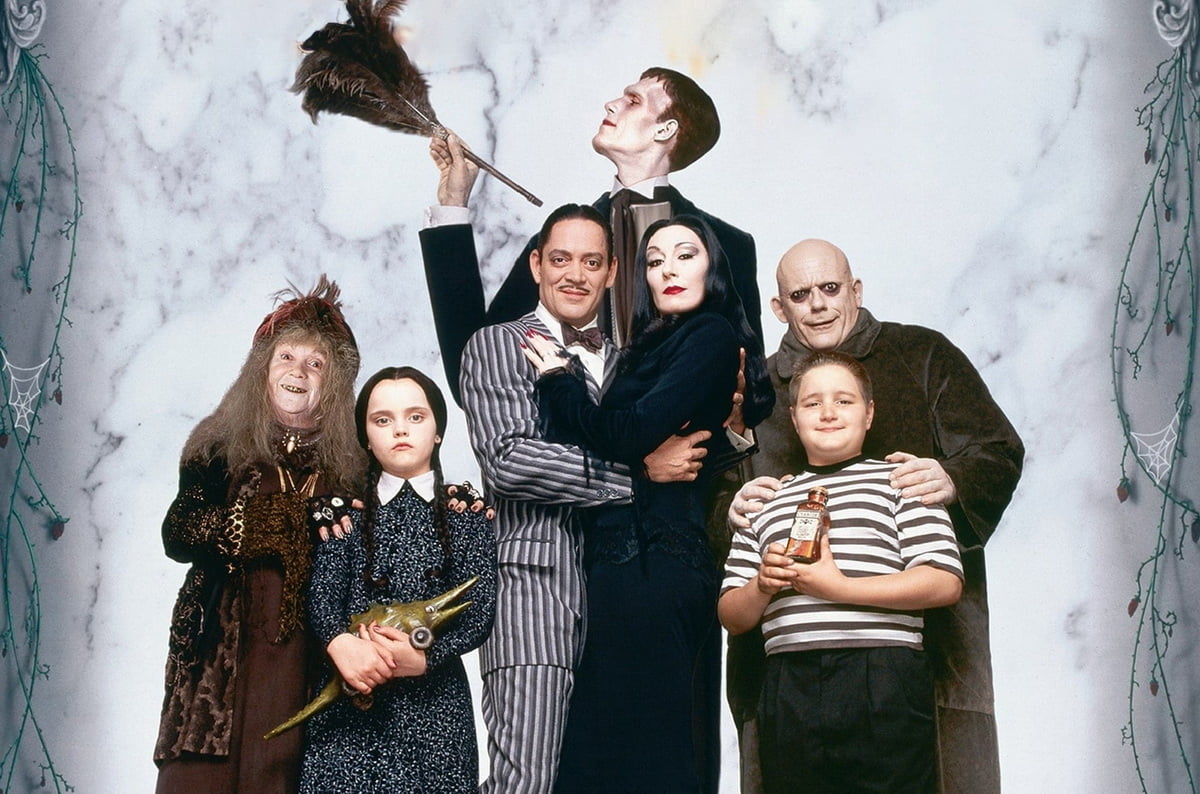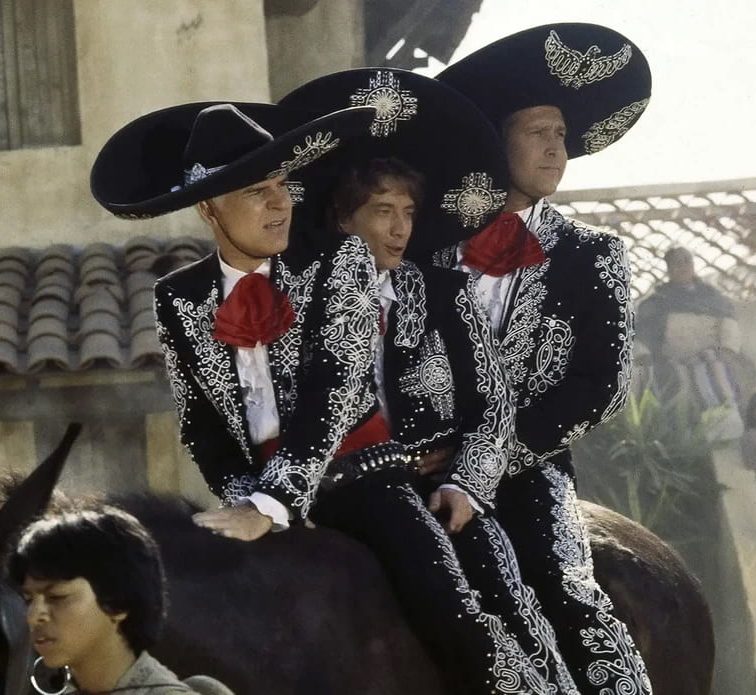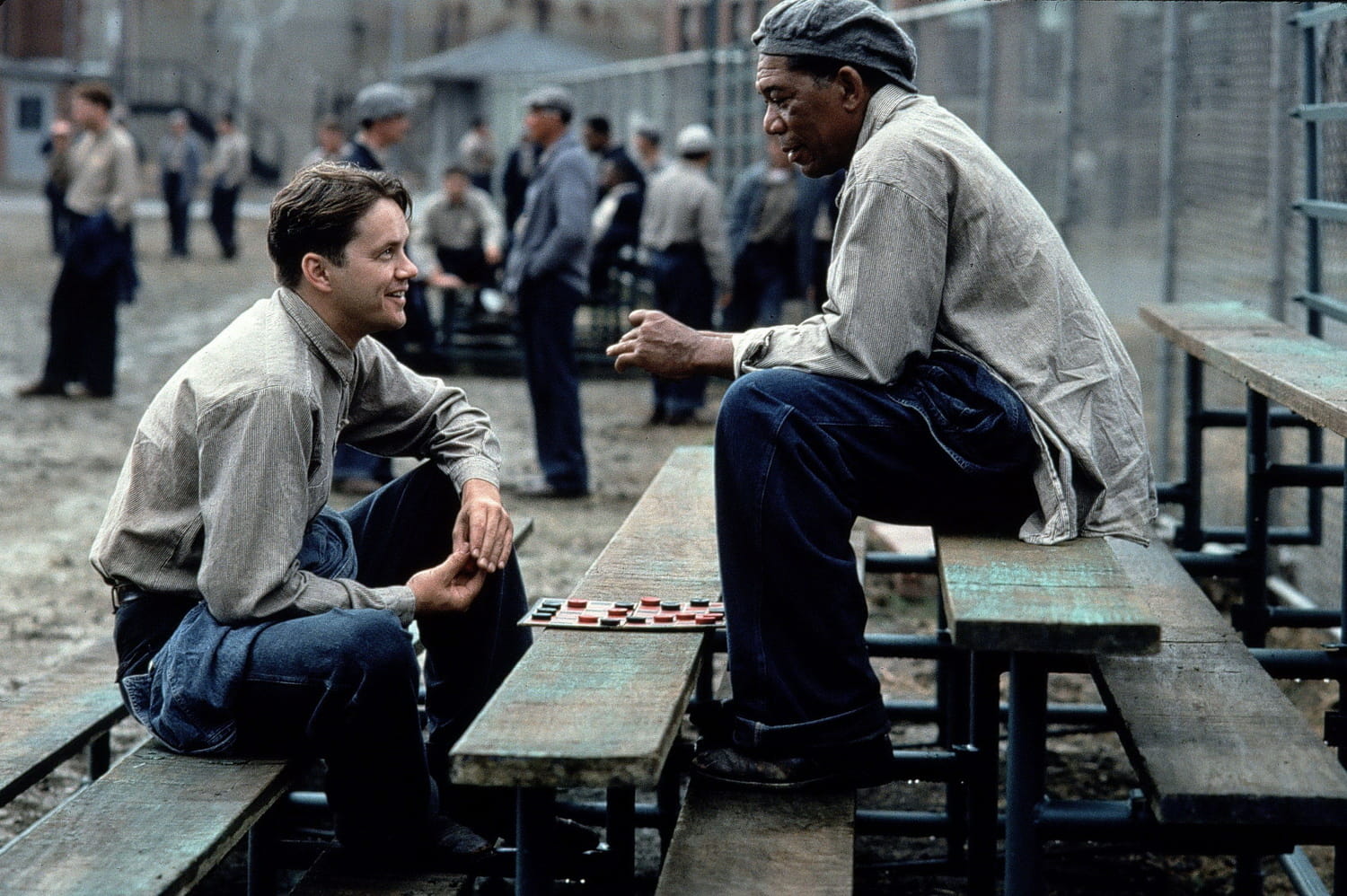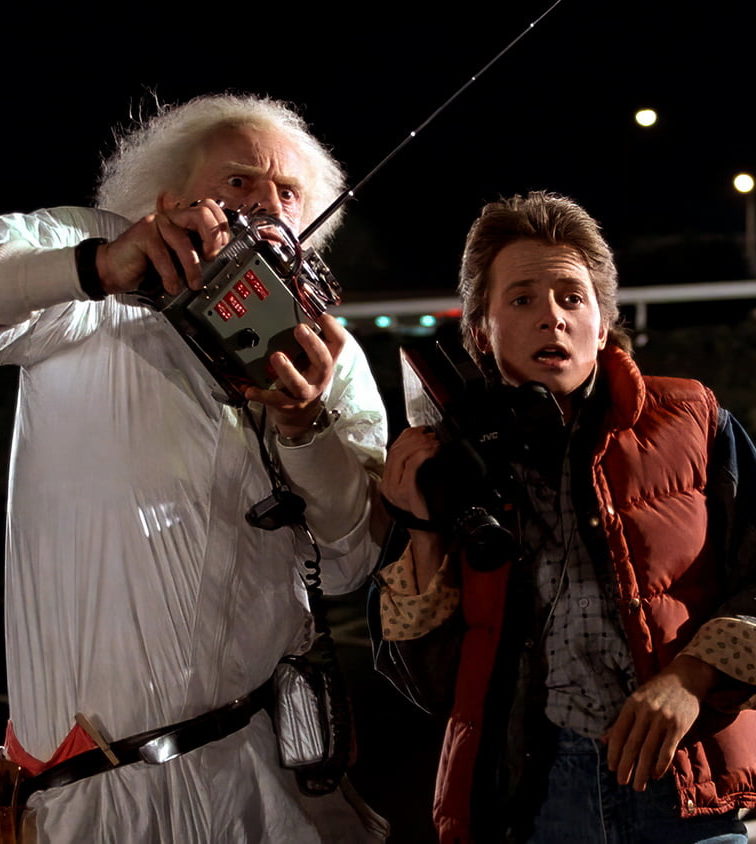In the shadowy corridors of cinema, few films blend dark humor with eccentric charm quite like “The Addams Family” (1991). A creation that sprang from the ink of Charles Addams’ cartoons, this cinematic gem has fascinated audiences with its peculiar allure and gothic whimsy.
Imagine a world where Tim Burton nearly took the helm, bringing his iconic style to an already quirky universe. Or consider the vast mansion, meticulously crafted to house our beloved, macabre family. These are but glimpses into the intriguing layers behind the film. Dive deeper as we unravel fun facts about “The Addams Family” (1991), each more captivating than the last.
1. Inspiration from a Single-Cartoon Panel
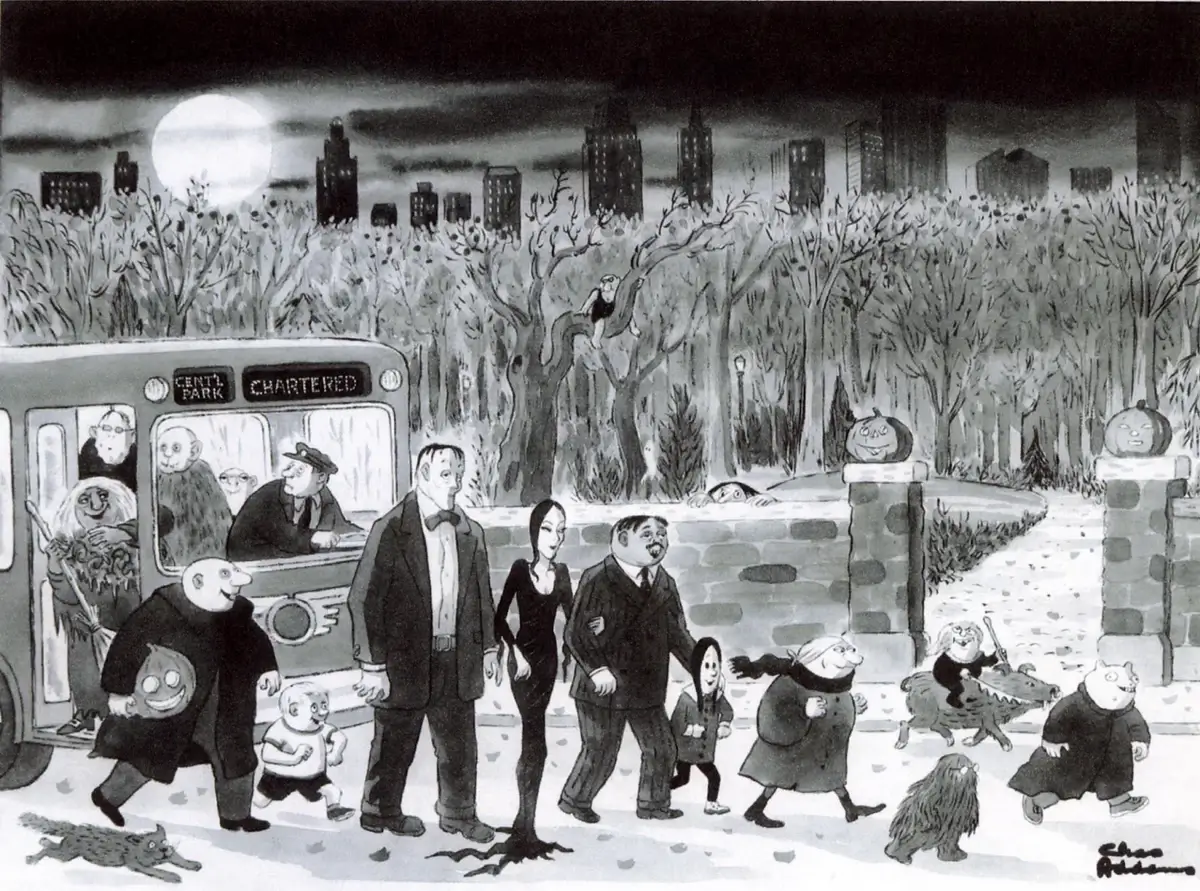
Original New Yorker cartoon by Charles Addams. Image: lambiek.net
The Addams Family movie of 1991 owes its inception to the genius of Charles Addams, whose single-panel cartoons first appeared in The New Yorker in 1938.
These cartoons, characterized by a unique blend of dark humor and gothic elements, sketched the quirky lifestyle of a family that delighted in the macabre, setting the foundation for the beloved characters we know today.
2. Tim Burton and The Addams Family: A Missed Connection
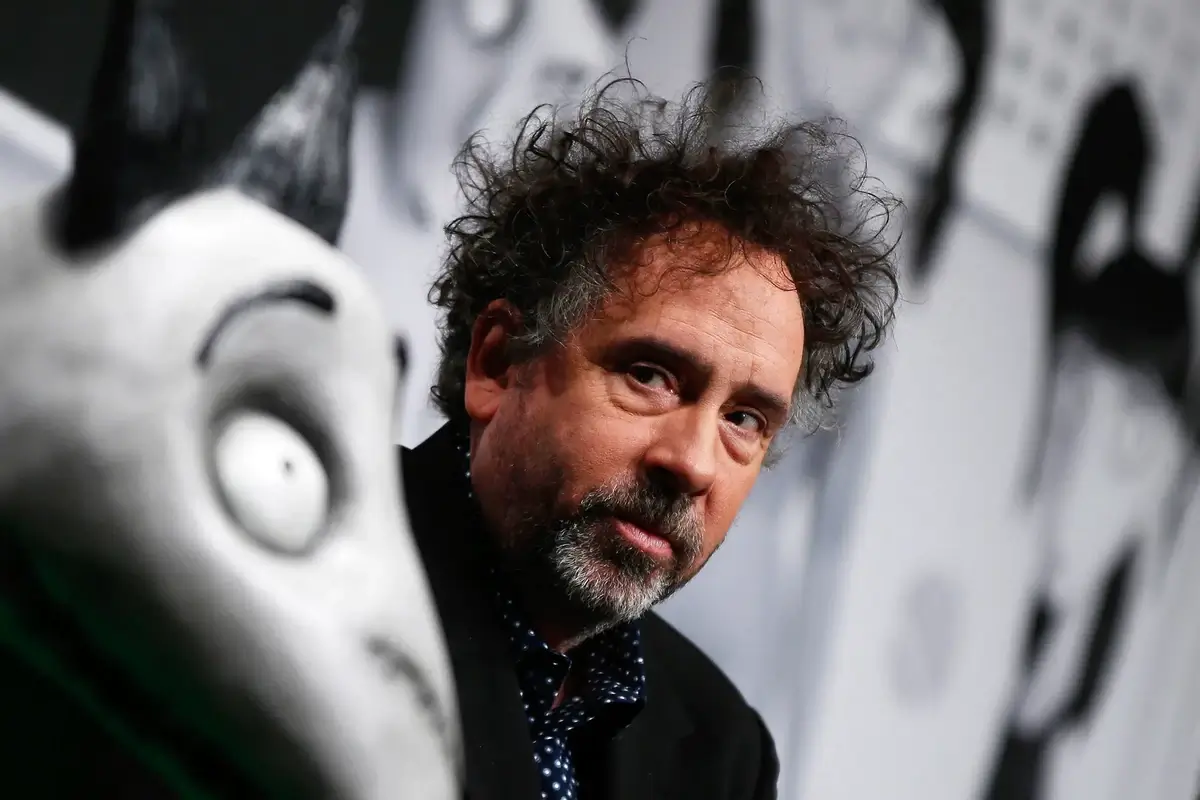
Tim Burton refused to direct The Addams Family. Image: thedailybeast.com
In the early stages of developing the Addams Family movie in 1991, Tim Burton was a prime candidate to direct, embodying the perfect blend of gothic flair and dark comedy the project demanded. Known for his work on “Beetlejuice” and “Batman,” Burton’s visual style and fascination with the macabre made him an ideal choice. However, Burton was already committed to directing “Batman Returns” and thus had to pass on the opportunity. This left the door open for Barry Sonnenfeld, a cinematographer with a strong visual sense but untested as a director, to take the helm. Sonnenfeld, who later directed hits like “Men in Black,” was actually the third choice after Burton and Terry Gilliam, indicating producers’ high expectations for a visually distinctive and quirky film.
Despite initially missing the chance to direct the Addams Family, Burton’s connection to the franchise came full circle with his direction of “Wednesday,” a Netflix series centered around the iconic daughter of the Addams Family, showcasing his long-awaited interpretation of the beloved characters.
3. Anjelica Huston’s Transformation into Morticia Addams
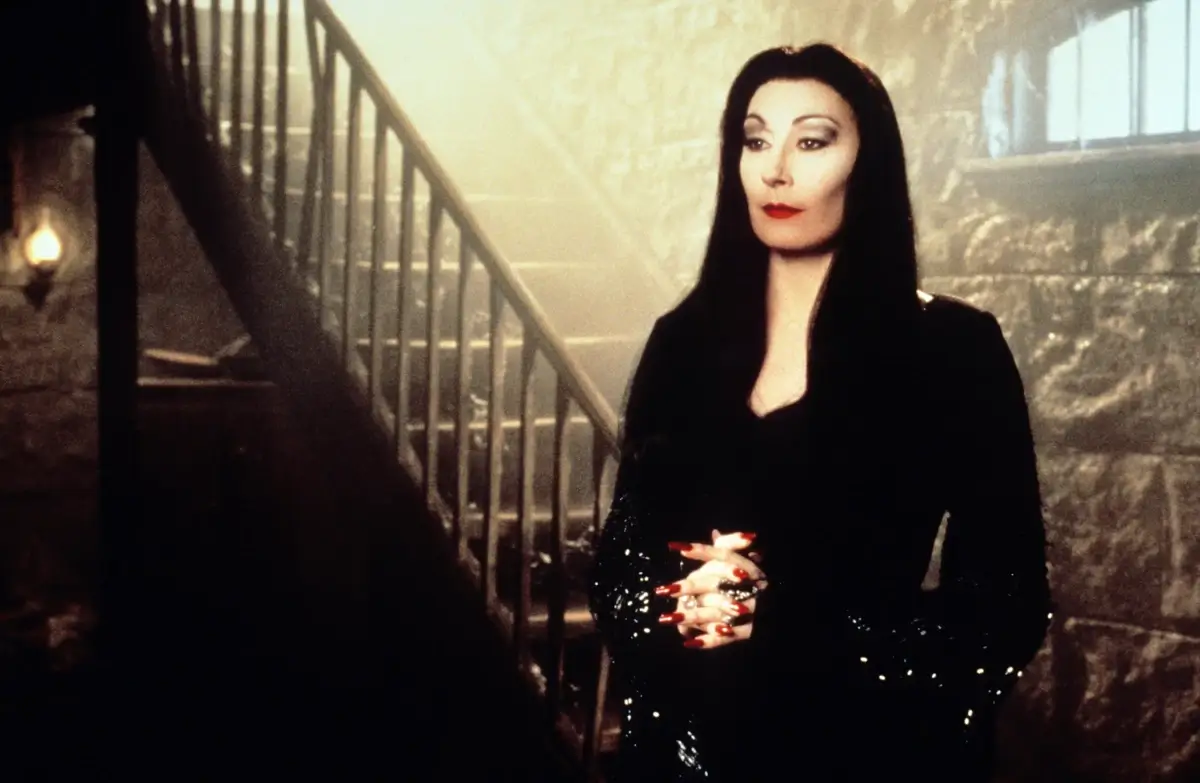
Image: popsugar.com
Anjelica Huston’s portrayal of Morticia Addams in the 1991 Addams Family movie is iconic, largely due to the extensive makeup, costume, and character work that went into her transformation. Huston wore a tightly laced corset under her black, form-fitting dress to achieve Morticia’s slender silhouette. This costume choice, while visually striking, restricted her movement, adding to the character’s ethereal and deliberate grace. The costume design, by Ruth Myers, drew heavily on vintage fabrics and incorporated Edwardian and Victorian details, aiming to present the Addams as a sort of aristocratic family with a dark twist. Myers’s work earned her an Oscar nomination, acknowledging the lasting impact of her designs.
Huston’s makeup routine for Morticia was equally elaborate. It involved attaching pieces of silk to her temples, to which elastic bands were sewn and then tied behind her head to create a slightly lifted, otherworldly look. This process, while painful by the actress’s own admission, was crucial for achieving Morticia’s unique aesthetic. The makeup was designed to be pale and contrasted sharply with the dark, dramatic lip color, complementing the character’s gothic allure. The nails, long and claw-like, added the final touch to Morticia’s look, although they proved to be a practical challenge for Huston.
Interestingly, Huston drew inspiration for Morticia not from the character’s previous incarnations but from supermodel Jerry Hall, seeing her as a model of motherhood and elegance, which she wanted to infuse into Morticia’s character. This unexpected muse helped Huston bring a unique blend of warmth and sophistication to the role.
4. Thing T. Thing’s Portrayal
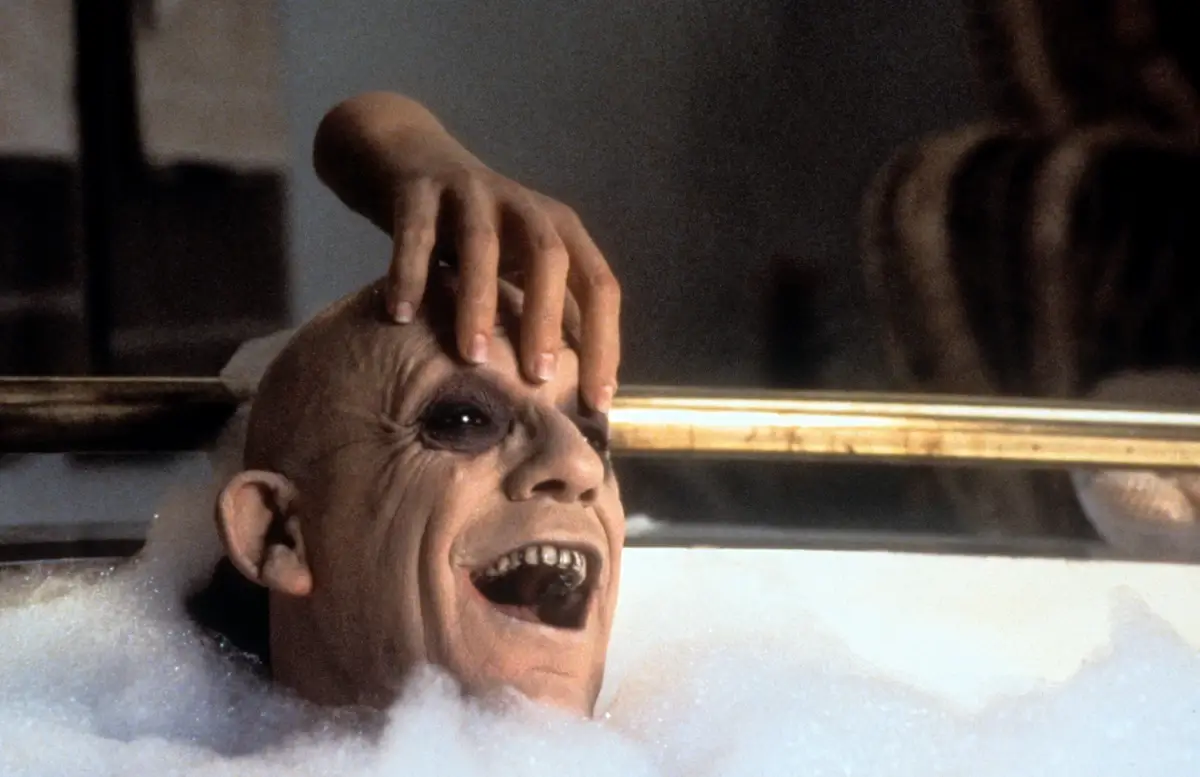
Thing from “The Addams Family” sits on Fester’s head. Image: IMDb
The portrayal of Thing T. Thing in the 1991 Addams Family movie is a fascinating blend of talent and technology, with magician Christopher Hart at the helm. Hart, a Canadian magician known for his sleight of hand, lent not just his hand but his ability to convey emotion and intent without a word, purely through movement. His background in magic, particularly his expertise in manipulating objects with precision, made him the ideal choice for the role of Thing.
Christopher Hart’s involvement added a unique dimension to the film, transforming Thing from a simple special effect into a character with personality and presence. This transition wasn’t merely about technical prowess; it required an understanding of how to communicate effectively without the usual tools actors rely on—facial expressions and body language. Hart’s performance is a testament to the idea that sometimes, less is indeed more, and that a single hand can carry a weight of expression on par with any fully-bodied character.
5. Wednesday’s Name Origin
The choice of “Wednesday” is widely believed to be inspired by the nursery rhyme “Monday’s Child,” specifically the line “Wednesday’s child is full of woe.” This line aligns perfectly with Wednesday Addams’ gloomy and morose demeanor, making her name a direct nod to her character traits.
Another layer to this name’s origin story comes from a personal anecdote shared by Joan Blake, a college roommate of a friend of Charles Addams. During a social gathering which Addams attended, Blake suggested the name Wednesday, referencing the nursery rhyme, to which Addams took a liking.
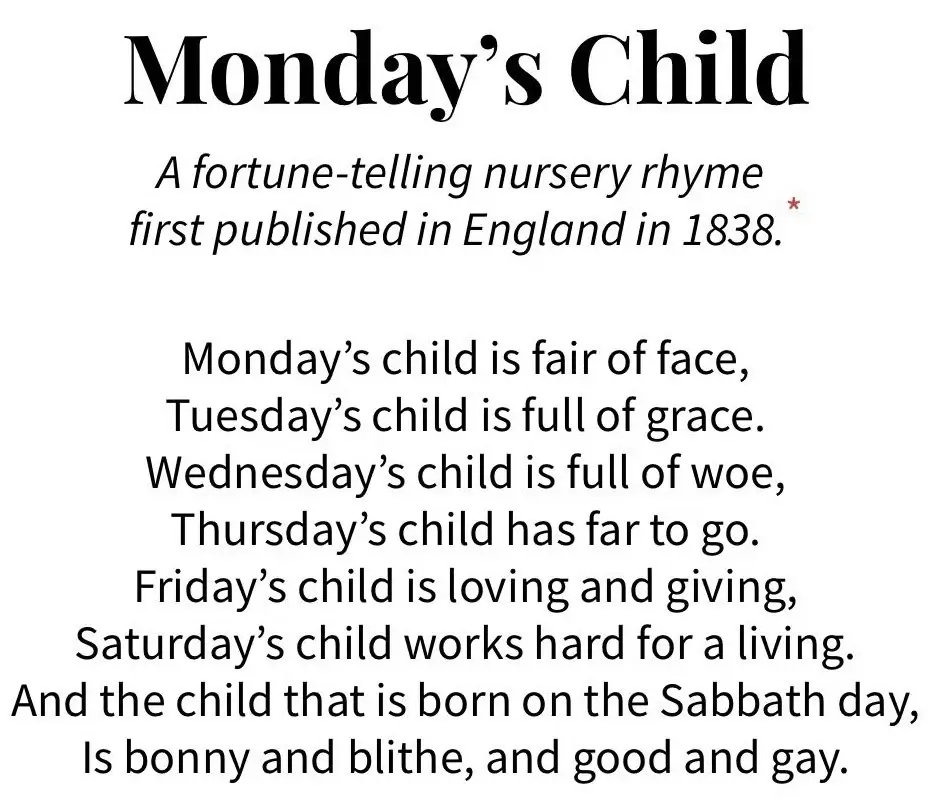
Monday’s Child. Image: Reddit
6. MC Hammer’s “Addams Groove”
“Addams Groove” by MC Hammer, released as part of the soundtrack for “The Addams Family” (1991), showcases a unique blend of pop culture and the film’s quirky charm. This track not only featured on the movie’s soundtrack but also appeared on Hammer’s album “Too Legit to Quit,” particularly on the cassette version. It achieved significant success, peaking at number 7 on the US Billboard Hot 100 and securing gold certification from the RIAA for 500,000 units sold in the United States. The song’s global appeal was evident, charting in several countries and becoming a top-ten hit in places like France, Ireland, and the UK.
The promotional strategy for “Too Legit to Quit,” including “Addams Groove,” was Capitol Records’ largest at the time. It featured an extensive marketing campaign that spanned TV ads, promotional videoclips, a Saturday morning cartoon show, and a Pepsi commercial featuring Hammer’s music. The track’s music video, part of this promotional blitz, played a key role in the film’s advertising campaigns, further cementing the song’s place in early ’90s pop culture.
7. Iconic One-Liners
The 1991 classic “The Addams Family” is celebrated for its dark humor and memorable one-liners that have etched their way into the hearts of fans and pop culture. From the morbidly humorous exchanges between siblings Wednesday and Pugsley to Morticia’s elegantly gothic outlook on life, the film delivers lines that perfectly encapsulate the Addams’ peculiar charm.
For instance, the dialogue shines in moments like Wednesday’s grim yet matter-of-fact interactions, exemplified when she nonchalantly discusses electrocuting her brother as part of a game, or her iconic response to a Girl Scout about whether their cookies are made from real Girl Scouts, showcasing the film’s unique blend of the macabre with wit.
Here are specific phrases from “The Addams Family” (1991) film that highlight its unique dialogue:
- Wednesday’s dark humor in a game with Pugsley: “It’s called, ‘Is There a God?'” This line comes as she straps Pugsley into an electric chair, showcasing the film’s playful approach to morbid themes.
- Morticia’s indulgent parenting: When she finds out about the children’s electrocution game, she responds with a mix of parental authority and Addams family charm, “I said no.” This encapsulates the family’s darkly comedic and loving nature.
- Wednesday’s response to the Girl Scout: “Are they made from real Girl Scouts?” This quip occurs when a Girl Scout questions the ingredients of their lemonade, highlighting Wednesday’s macabre wit.
- Morticia and Gomez’s romantic exchange: Gomez asks, “How long has it been since we waltzed?” Morticia replies, “Oh, Gomez…hours.” This interaction underscores their passionate and dramatic relationship, a recurring theme throughout the film.
8. Anthony Hopkins Turned Down Fester

Anthony Hopkins turned down the role of Uncle Fester.
In a fascinating turn of events that could have significantly altered cinematic history, Anthony Hopkins was initially approached for the role of Uncle Fester in “The Addams Family” (1991). However, Hopkins opted for a path that would lead him to immortalize the chilling character of Hannibal Lecter in “The Silence of the Lambs” instead. This decision came after Sean Connery, another heavyweight actor, had turned down the Lecter role, deeming the script “disgusting.”
Hopkins’ portrayal of Lecter not only won him the Best Actor Oscar but also firmly established the character as one of the most iconic villains in film history. This sequence of casting decisions underscores the unpredictable nature of film production and how pivotal roles can find their perfect fit in seemingly serendipitous ways.
9. Actor Rebellion Led by Christina Ricci – For a Definitive Fester Storyline
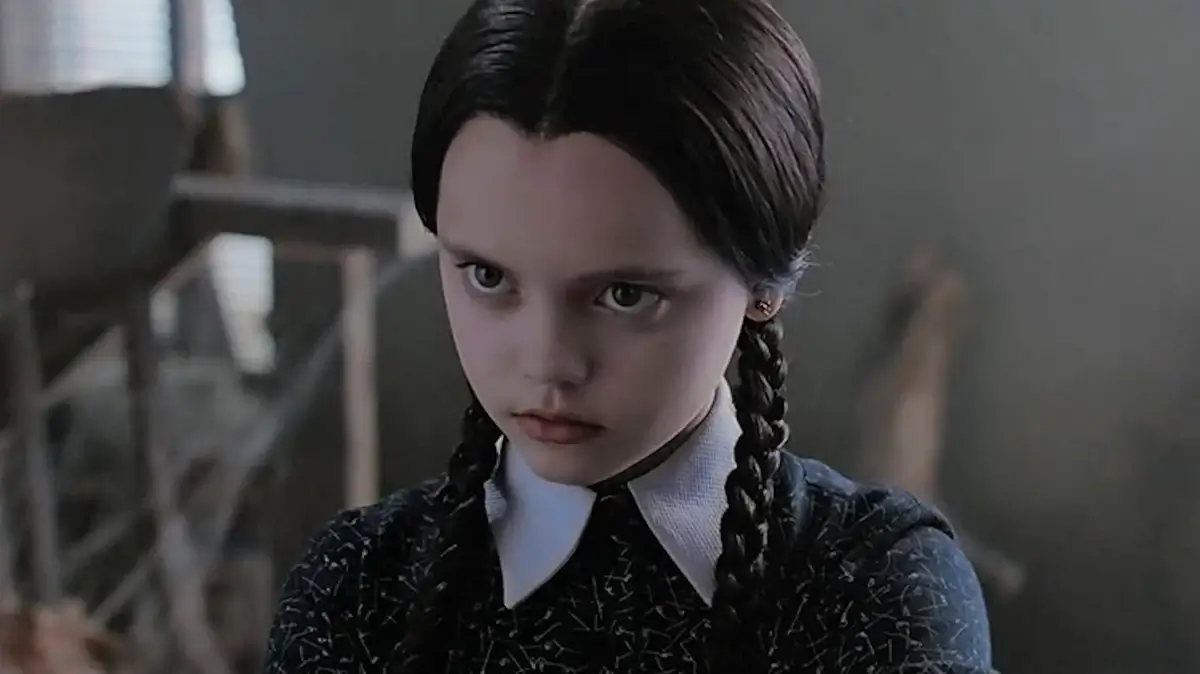
Image: slashfilm.com
At the tender age of 10, Christina Ricci, portraying Wednesday Addams in “The Addams Family” (1991), played a pivotal role off-screen that significantly impacted the film’s narrative. The original script had Uncle Fester, played by Christopher Lloyd, pegged as an imposter, a storyline that didn’t sit well with the cast. Ricci, along with other key cast members, expressed strong reservations about this direction, advocating for a sense of genuine family unity that defined the Addams family essence.
It was Ricci’s articulate presentation of these concerns that led to a major shift in the plot. Director Barry Sonnenfeld and the production team heeded the young actress’s input, altering the script to reveal Fester as the true long-lost brother of Gomez Addams. This change not only preserved the integrity of the Addams family bond but also underscored the importance of family, regardless of their eccentricities.
10. High-Speed Gibberish for Cousin Itt
In the 1991 Addams Family movie, the character Cousin Itt, portrayed by John Franklin, delivered his lines in a unique form of high-speed gibberish. This effect was achieved by recording Franklin’s voice and then speeding up the playback, creating the incomprehensible and iconic sound that defined Cousin Itt’s speech.
This technique added a layer of mystery and humor to the character, making him an unforgettable part of the Addams family ensemble.
11. Success Leads to Sequels

“Addams Family Values” (1993). Image: tmsimg.com
Following the commercial and critical success of “The Addams Family” (1991), the sequel “Addams Family Values” was released in 1993, continuing the macabre adventures of the beloved family. This sequel not only retained the original cast, including Anjelica Huston as Morticia, Raul Julia as Gomez, and Christina Ricci as Wednesday, but also introduced new characters that further enriched the Addams’ world.
The plot thickens with Fester’s marriage to the malevolent Debbie, played by Joan Cusack, whose intentions are far from loving. The sequel is celebrated for its clever humor, darker tone, and the further exploration of the family’s peculiar lifestyle, cementing the Addams’ place in pop culture. Despite facing challenges, such as Raul Julia’s declining health during production, “Addams Family Values” managed to deliver memorable moments and witty lines that resonated with audiences and critics alike.
12. Addams Family’s Film Rights Battle
The journey to adapt “The Addams Family” into a feature film indeed faced significant hurdles, primarily due to issues surrounding the film rights. Initially, 20th Century Fox, with Scott Rudin as the development executive, was interested in turning Charles Addams’ cartoons into a movie. However, they encountered obstacles when they discovered that Orion Pictures held the film rights and was planning to develop a rebooted TV series, making them unwilling to sell the rights. Additionally, rights held by Charles Addams’ widow posed further complications. The deadlock was eventually resolved when Addams’ widow sold the remaining rights to Orion, which then decided to move forward with a movie adaptation, bringing Rudin on board as the producer. This decision shifted the project’s direction from a potential TV series to a feature film under Orion’s banner. This process was complicated by the fact that “The Addams Family” was relatively unknown to younger audiences at the time, unlike “The Munsters,” which continued to attract new fans through repeats.
The production faced numerous challenges, from script rewrites to difficulties in securing a director, with Tim Burton and Terry Gilliam being approached before Barry Sonnenfeld took on the role. The filming process was fraught with stress and health issues among the cast and crew, further complicated by Orion Pictures’ financial struggles. Amidst ongoing production, Orion needed cash and decided to sell “The Addams Family” to another studio, which turned out to be Paramount Pictures. This transition was made without the knowledge of the filmmakers, who found out about the sale from a journalist rather than directly from Orion or Paramount.
These challenges highlight the complex and fraught path “The Addams Family” movie took from conception to release, marked by rights disputes, production difficulties, and the eventual successful transition to Paramount Pictures, which gave the project the stability it needed to be completed and released.
13. Iconic Theme Song of The Addams Family
The theme song for “The Addams Family” (1991), while carrying the legacy of the 1964 TV series, became an integral part of the film’s identity, encapsulating its quirky and macabre atmosphere. Composed by Vic Mizzy, the song’s catchy melody and iconic finger snaps transcended its original TV roots, contributing significantly to the film’s and the franchise’s cultural imprint.
Mizzy’s composition, characterized by its use of the harpsichord and clever lyrics, effectively captured the essence of the Addams family, blending humor with an eerie vibe. The theme’s enduring popularity is a testament to its effectiveness in conveying the unique charm of the Addams family, making it a memorable piece of cinematic music history.
14. Kitty Kat and J.P. Addams Easter Eggs
The 1991 Addams Family movie is filled with nods to its predecessors and cultural references, among them the inclusion of Kitty Kat and a subtle nod to J.P. Morgan. When Gomez visits the Addams vault, an offscreen lion roars, prompting Gomez to say, “Down, Kitty!” This line is a homage to Kitty Kat, Morticia’s pet lion from the 1960s sitcom. Additionally, the book Gomez uses to access the vault is authored by J.P. Addams, a playful reference to the infamous banker J.P. Morgan, known for his financial prowess during the Gilded Age.
These Easter eggs not only enrich the film’s lore but also pay tribute to the broader cultural and historical context, connecting the Addams Family’s quirky world with real-world figures and elements from its original TV incarnation.
15. Fester’s Dark Tourism
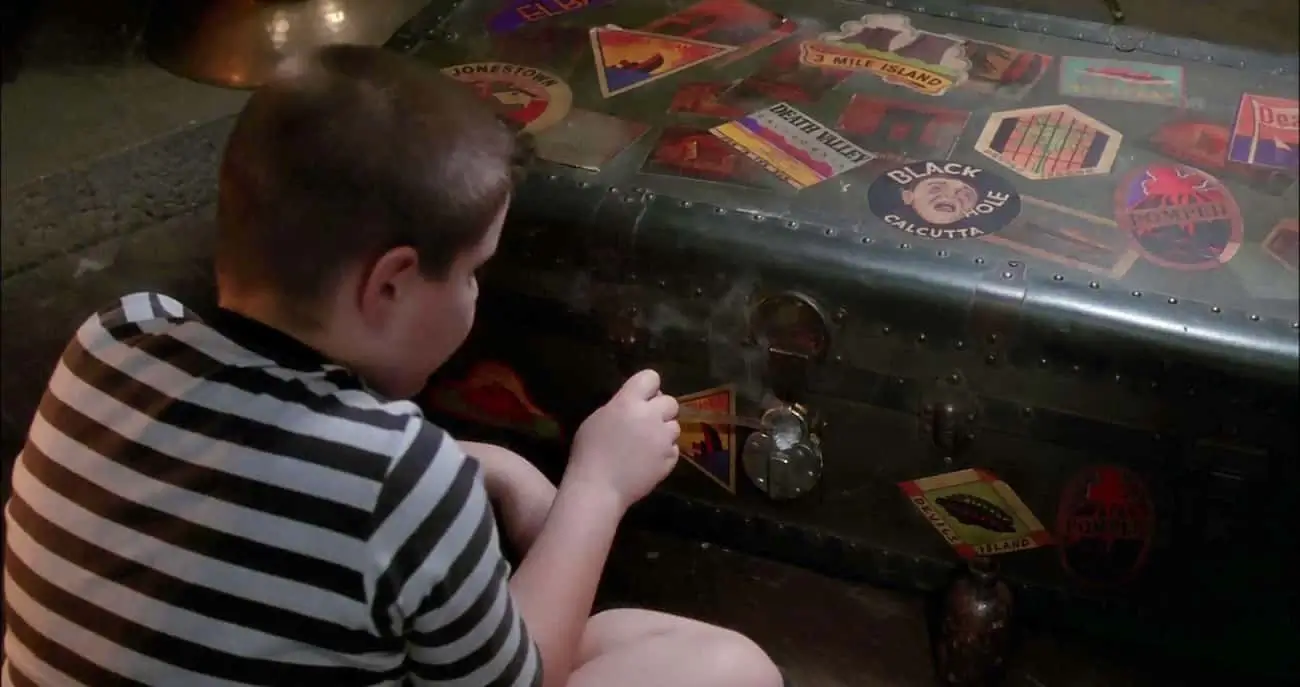
Uncle Fester’s trunk. Image: ranker.com
Uncle Fester’s penchant for dark tourism is subtly revealed through his trunk and room décor in The Addams Family. His belongings are adorned with stickers and pinnets from locations associated with historical tragedies, such as Jonestown, the Black Hole of Calcutta, and Elba.
These details hint at Fester’s morbid fascination with sites of great suffering and disaster, weaving a layer of dark humor into his character’s backstory and enriching the film’s gothic ambiance.
16. Burton’s Involvement
Despite Tim Burton’s notable absence as the director of the 1991 cult classic “The Addams Family,” his creative essence was unmistakably present through the involvement of his trusted collaborators, Caroline Thompson and Larry Wilson, in penning the screenplay.
This duo, known for their work on previous Burton projects such as “Edward Scissorhands,” brought a distinctive gothic charm and quirky humor to the script that aligned with the Burtonesque aesthetic. Their screenplay laid the foundation for a film that would become a defining moment in early ’90s cinema, blending macabre themes with a heartwarming family narrative.
FAQ
What is unusual about the Addams Family?
The Addams Family stands out for embracing the macabre with joy and affection, contrasting typical family values with their love for all things dark and eerie. Their unconventional lifestyle and interests, combined with a deep family bond, make them unique.
What is a fun fact about Gomez Addams?
Gomez Addams, portrayed by Raul Julia, is known for his passionate and eccentric personality. A fun fact is his skill in swordsmanship, often displayed with enthusiastic, impromptu duels in the family’s living room.
Is Fester really Gomez’s brother?
Yes, Fester is indeed Gomez’s brother. This familial tie, initially questioned in the plot of “The Addams Family” movie, is confirmed through a storyline twist, strengthening the bond between the characters.
What does Gomez call Morticia?
Gomez affectionately calls Morticia “Cara Mia,” which means “my beloved” in Italian, showcasing his deep love and affection for her. This term of endearment reflects their romantic and devoted relationship.


